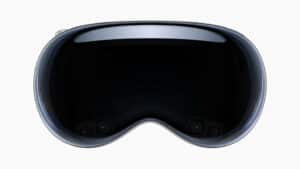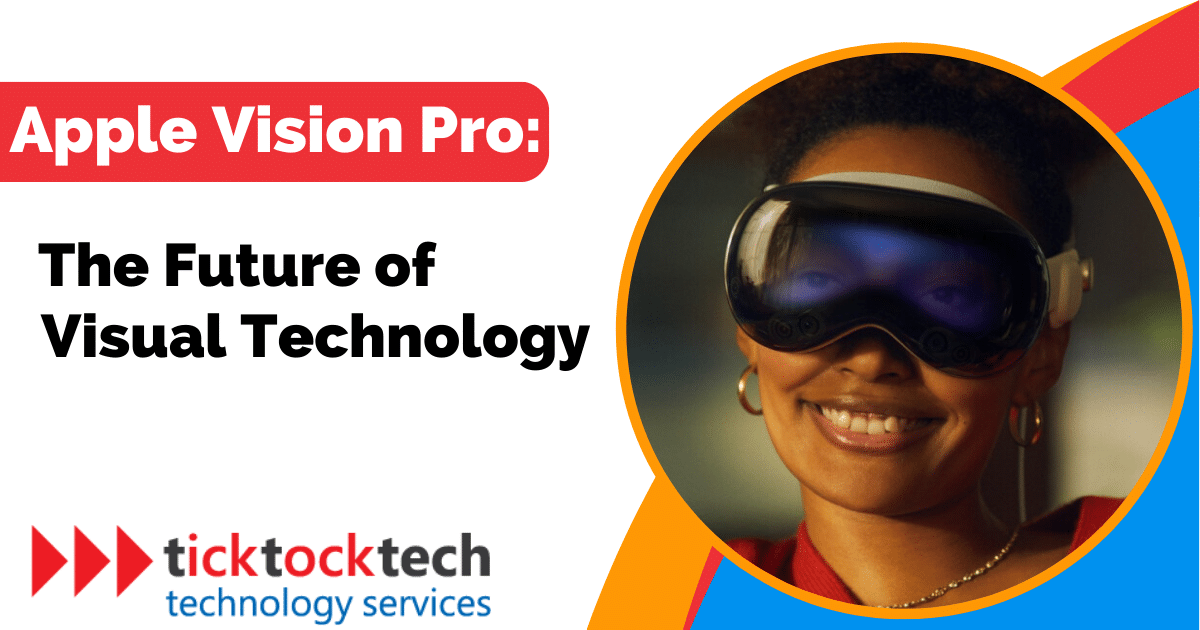On June 5, at the World Wide Developer Conference (WWDC) 2023, Apple finally unveiled its highly anticipated spatial computing headset — the Vision Pro — setting the stage for a groundbreaking leap into augmented reality. Apple’s upcoming new device combines augmented and mixed realities to transform how we use technology fundamentally. Users can navigate the device with a simple blink, gesture, or voice command and feel like they’re inside a digital world. It’s a new way of experiencing technology, where we can truly dive into the digital world. We will look into the exciting features of this new device and explore how the Apple Vision Pro is leading us into the future of visual technology.
What is the Vision Pro?
The Apple Vision Pro is a mixed reality(MR) headset that blends augmented reality (AR) and virtual reality (VR) to offer exciting and immersive experiences like never before. The MR headset introduces a groundbreaking concept called spatial computing. This new category brings a radical change, moving us away from traditional screen-based interfaces and towards immersive experiences that can directly overlay the digital realm over our physical environment.

Simply put, unlike with traditional VR headsets, you won’t have to block out the real world for an immersive experience with the Vision Pro. The spatial computing interface goes beyond conventional methods by fusing AI, human-computer interaction, and computer vision.
The result of such a combination is a new type of immersive device that can comprehend and interact with the environment, ultimately breaking new ground in visual tech.
visionOS
visionOS is Apple’s brainchild software designed explicitly for spatial computing that powers the Vision Pro. While visionOS shares some similarities with MacOS and iOS at the core level, it also includes a unique “real-time subsystem” that handles interactive visuals on the Vision Pro seamlessly and responsively.
The vision features a special three-dimensional interface that allows apps to break free from the limits of a regular screen. They can appear side by side and vary in size. The user interface (UI) of visionOS is intuitive and adapts to the surrounding light, creating shadows that help show scale and distance.
When visionOS launches, you can expect to see many visionOS-compatible apps. These include Unity apps that work directly on the Vision Pro. There will also be popular apps from major developers like Adobe’s Lightroom and Microsoft’s Office. There are also specific apps for medical and engineering fields. The medical app allows you to explore detailed anatomy renders, while the engineering app helps you visualize physics phenomena, like airflow, on real-world objects.
Vision Pro Design and Build
The Vision Pro adds a flair to traditional VR headset design. It features a sleek design reminiscent of high-end ski goggles. The frame features a continuous, tinted front panel that elegantly encloses the wearer’s eyes, serving as a lens while discreetly housing a built-in fan. This fan efficiently cools the internal electronics, ensuring optimal performance throughout your immersive experiences.
At the rear of the Vision Pro, you’ll find a versatile band that can swap easily, allowing for a customizable fit. Additionally, there’s a convenient dial for adjusting the tightness of the headset to suit your comfort level. In collaboration with Apple, Zeiss has developed magnetic lenses specifically designed for those who wear prescription glasses, ensuring a seamless and hassle-free experience for users with varying visual needs.
The MR headset diverges from the conventional battery pack design. Instead of integrating its battery into the device, a wire extends from the rear of the headset, connecting to a separate battery pack. This external pack offers up to two hours of usage. Vision Pro users can connect directly to a power outlet for an extended and uninterrupted experience.
Features and Specs of the Vision Pro
A dual-chip processor
The MR headset boasts two powerful processors that enable its immersive 3D experiences. The first is the Apple M2 chip, known for its exceptional performance in VR glasses. This processor handles advanced graphics, runs the VisionOS system, and manages visual algorithms.
On the other hand, the new Apple R1 chip is specifically designed to process data from cameras, sensors, and microphones. It excels at swiftly transmitting captured images, achieving an impressive response time of 12 milliseconds. The R1 chip also enables the Vision Pro’s Eyesight feature. This feature projects a live feed of the wearer’s eyes onto the external display, adding an extra layer of realism to the overall experience.
Dual ultra HD displays
The Vision Pro has two displays, one for each eye and an additional external panel. Combined, these displays offer an impressive total of 46 million pixels — 23 million each.
A specially designed 3D lens ensures the user interface (UI) remains constantly visible, enhancing the overall experience. Moreover, HDR and “wide color” contribute to an exceptionally vibrant and superior image quality.
Infrared (IR) camera and lidar sensors
Inside the Vision Pro, IR cameras are responsible for tracking your eyes, while on the outside of the device, downward-facing cameras track your hands. Additionally, lidar sensors detect objects surrounding the Vision Pro in real-time, continuously tracking their positions.
These combined technologies ensure seamless and accurate interaction that eliminates the need for controllers in the virtual environment. The Vision Pro is equipped with 23 sensors, including twelve cameras, five sensors, and six microphones, and all these sensors provide input to the R1 chip.
Spatial audio system
Equipped with audio pods positioned near the ears, the Vision Pro delivers personalized audio while allowing users to stay aware of their surroundings. Sensors analyze the environment through a spatial audio system and dynamically adjust the audio output to match the user’s surroundings.
Optic ID grade security system
With the Optic ID, the Apple Vision Pro incorporates a robust security system that analyzes and identifies the precise iris information of the user. This advanced feature ensures optimal user privacy and secure access to the device.
Vision Pro Pioneering a New Future of Visual and Immersive Technology
The upcoming Apple Vision Pro holds great potential to revolutionize computing as we know it. It could transform the way we work, play, and learn.
Gaming
One exciting use of Vision Pro is gaming. It no doubt can create incredibly realistic and immersive gaming experiences. Players can interact with virtual objects in real-time and even see themselves in the game world.
Education
In the field of education, Vision Pro potentially introduces new innovative learning methods. Students can explore virtual worlds, collaborate with peers on projects, and learn from experts in real-time. With spatial computing-enabled vision apps, you can now visualize learning materials, simulate theoretical frameworks in real-life parameters, and much more.
Workplace collaboration
At the workplace, Vision Pro can enhance productivity. Employees can collaborate on projects, access information from anywhere, and even attend meetings while maintaining the element of realism. With the elimination of this key constraint in remote collaboration, workplace collaboration is set to become more optimal and efficient.
Entertainment
For entertainment purposes, Vision Pro offers a unique one-of-a-kind experience. Users can enjoy movies, TV shows, and sports in a larger-than-life format and interact with the content in real-time, adding a new level of engagement and excitement.

